Considerations for Boron Applications to Corn between V10 to R2
May 16, 2020
Agronomics
In high yield situations, boron fertilization becomes increasingly important on corn. Severe boron (B) deficiencies (<6 ppm B, tissue test values) between V10 to V14 may result in pollination issues from poor and delayed tassel development and reduced pollen viability. A more common scenario is where insufficient boron availability (<9 ppm B, tissue test values) between blister stage (R2) to the dough stage (R4) affects kernel development. During this stage boron is important in the migration and metabolism of carbohydrates, facilitating the transport of sugars through membranes.
It is typical for boron applications to perform well in combination with fungicides. An increase overall plant health and a net photosynthesis from the fungicides in combination with improved sugar partitioning from boron has made boron / fungicide combinations an effective combination to increase yields.
Potassium considerations: If making a foliar boron application at V10, one should also evaluate potassium needs as it also plays key role in sugar loading and transport and is in peak demand at this time.
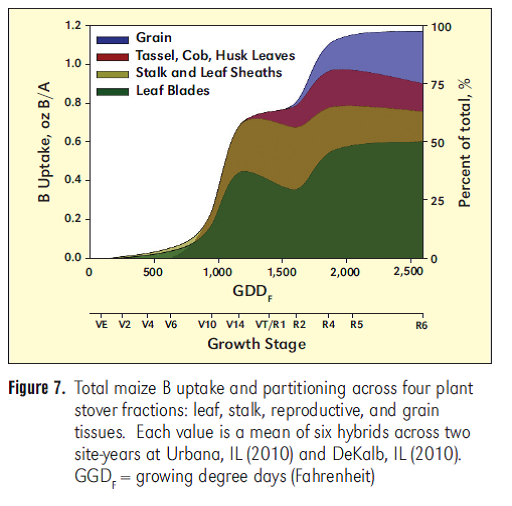
Conditions Leading to Boron (B) Deficiencies
Boron is very water soluble and deficiency is related to soil type, organic matter content, rainfall and pH. Typically well to excessively-drained sands are most susceptible to boron deficiency. High rainfall or excessive irrigation can leach boron out of the root zone. Boron availability also decreases with increasing soil pH particularly in alkaline‐calcareous soils. Boron uptake decreases under drought conditions; it is not uncommon in many corn growing regions to have mild to moderate drought conditions during peak demand for boron.
Desired Boron (B) Tissue Test Values
The desired tissue test levels are between 9 to 25 ppm boron between V10 to R4 stage for highly managed and high yielding corn. If early test levels between V4 to V10 are coming back <9 ppm Boron, it is a good indicator that a foliar boron application may be of value if the crop has potential to have a good or high yield.
Key Application Timings and Rates
Because boron is important for pollination and movement of sugar to developing kernels, the recommended timing for B applications is aligned with peak demand between V10 to R2. Best results are typically seen with applications between V10 to VT. Applications after R2 are not effective. The typical practice is often included with fungicide and insecticide sprays via pivots or foliar applications by aerial and ground rig application. Tank mix compatibility of boron with fungicides and insecticides is typically very good.
Mobility of foliar applied boron should be considered when selecting a boron product. While boron moves through the leaf into the plant quite well it tends to bind to cell walls structures rapidly resulting in decreased mobility. Translocation of boron to newly developing kernels and growth points is fundamental to the success of foliar applied boron. BRANDT® Smart System® delivery technology protects boron from binding to cell walls, thus increasing its mobility within the plant.
| Product | Rate | Mobility |
| BRANDT Smart B Mo | 1-4 pts/a | Excellent Foliar Mobility |
| BRANDT Smart B | 1-4 pts/a | Excellent Foliar Mobility |
| BRANDT Smart K B | 1-4 qts/a | Excellent Foliar Mobility – Best V10 product because it includes K2O |
| N-Boron | 1-4 qts/a | Good Foliar Mobility |
| BRANDT® Manni-Plex® Moly B | 1-4 qts/a | Good Foliar Mobility |
| BRANDT 10% Boron | 1-4 qts/a | Lower Foliar Mobility, Higher Application Rate |
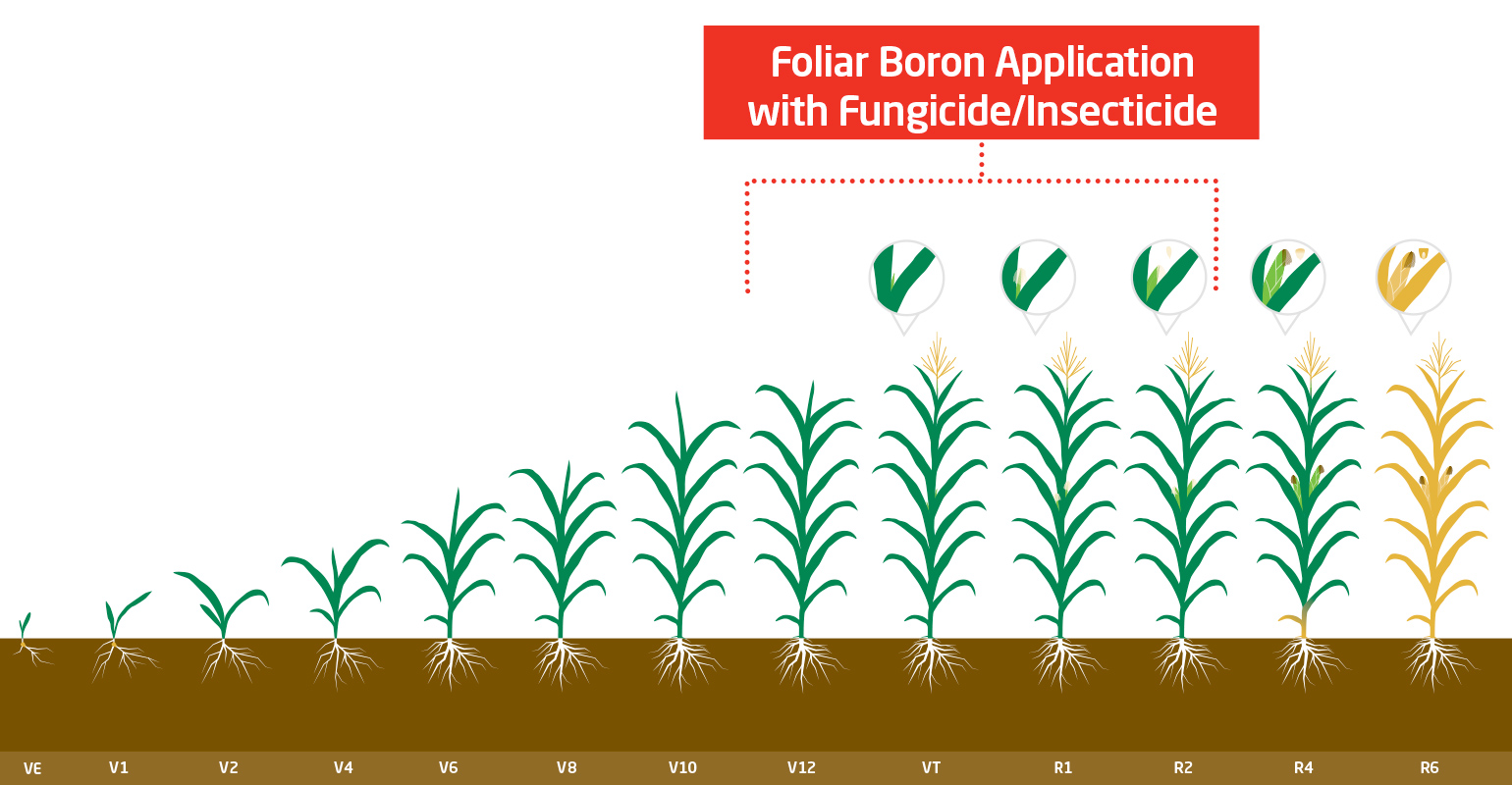
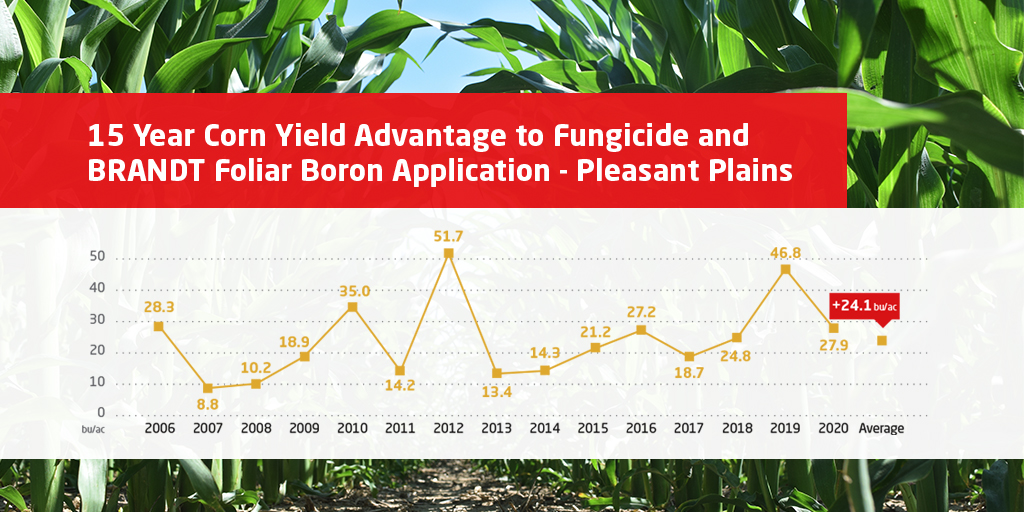
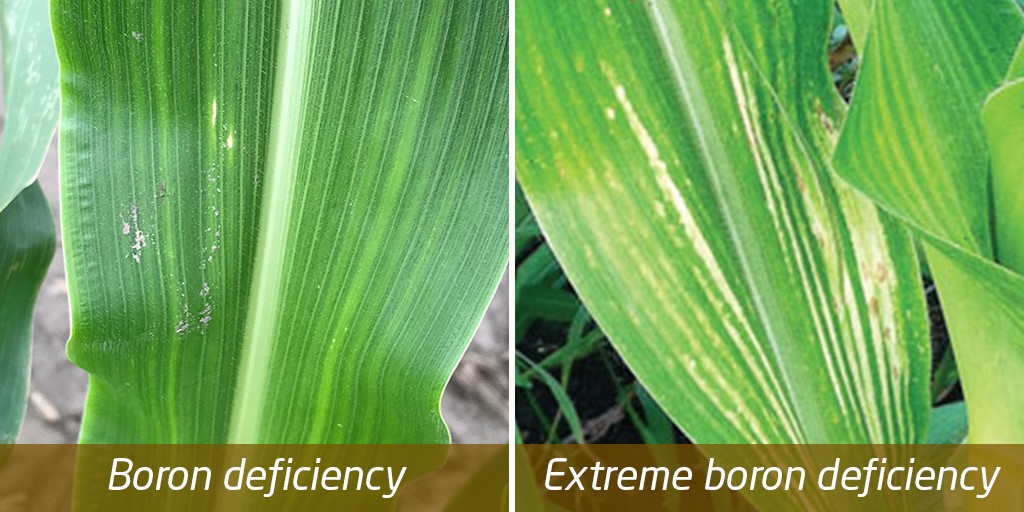
Nutrient Deficiency Illustrations
Yellow or white spots develop between the veins on young leaves, and the spots often coalesce forming streaks. These streaks, which may be waxy and raised from the leaf surface, do not normally develop on fully grown leaves. The leaf tips may be curled. There is also a shortening of the internodes and often the young leaves fail to open.
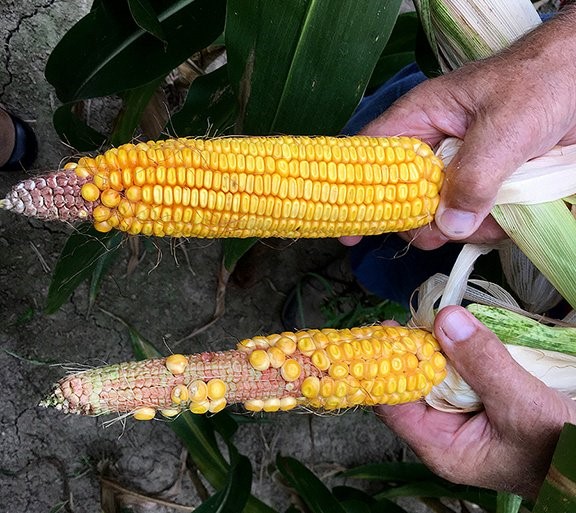
Severe boron deficiency resulting in poor kernel development
